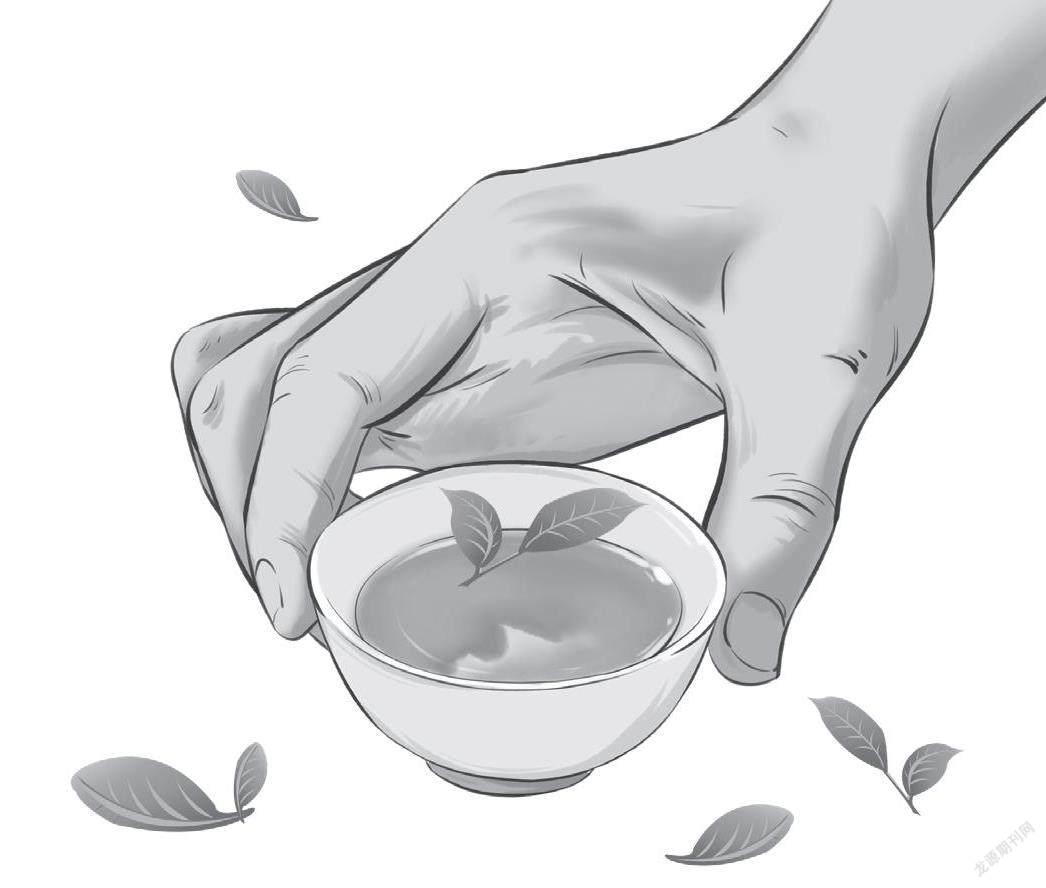Traditional Tea Processing Techniques and Associated Social Practices in China中国传统制茶技艺及其相关习俗
2023-03-16涂淑梅
涂淑梅

2022年,“中國传统制茶技艺及其相关习俗”已列入联合国教科文组织《人类非物质文化遗产代表作名录》。至此,中国共有43个项目列入联合国教科文组织非物质文化遗产名录、名册,居世界第一。成熟发达的传统制茶技艺及其广泛深入的社会实践,体现着中华民族的创造力和文化多样性,传达着茶和天下、包容并蓄的理念。
The tea that has delighted and 1)fascinated the world for millenniahas finally received top-level global 2)recognition as a shared culturaltreasure of mankind.
“Traditional tea processing techniques and associated socialpractices in China” were added to UNESCO’s Representative List of theIntangible Cultural Heritage of Humanity. increasing the number of worldintangible cultural heritages in China to 43. China maintains its No.1position in the field.
The List of World Intangible Cultural Heritage has recognized theknowledge, skills, and practices concerning the management of teaplantations, picking of tea leaves, and the processing, drinking andsharing of tea in China.
As a document from the Ministry of Culture and Tourism to UNESCOexplained, tea is ubiquitous in Chinese people’s daily life. 3)Steeped orboiled tea is served in homes, workplaces, tea houses, restaurants andso on. Tea is also an important part of social events and 4)ceremonies
such as weddings and praying to the ancestors.
“The Practice of greeting guests and buildingrelationships within families and among neighbors through tearelatedactivities is common to multiple ethnic groups, providing asense of shared identity and continuity for the communities,” accordingto the official website of UNESCO.
Based on natural conditions and local customs, Chinese teaproducers have developed six categories of tea—green, yellow, dark,white, oolong and black teas. Together with reprocessed teas, such asflower-scented teas, there are more than 2,000 tea products. 5)Coreskills include shaqing (enzyme inactivation), menhuang (yellowing),wodui (piling), weidiao (withering), zuoqing (leaves shaking and cooling),fajiao (oxidation or fermentation) and yinzhi (scenting).
Because various natural growing conditions are more suitable forcertain types of tea, the different categories of tea are distributed intodiverse regions around China.
China is a country with a time-honored civilization and a land ofceremony and 6)decorum. Whenever guests visit, it is necessary tomake and serve tea to them.
Before serving tea, you may ask them for their preferences asto what kind of tea they fancy and serve them the tea in the mostappropriate teacups. In the course of serving tea, the host should takecareful note of how much water is remaining in the cups and in the kettle.Usually, if the tea is made in a teacup, boiling water should be addedafter half of the cup has been 7)consumed; and thus the cup is kept filledso that the tea retains the same 8)bouquet and remains pleasantly warmthroughout the entire course of tea-drinking. Snacks, sweets and otherdishes may be served at tea time to complement the fragrance of the tea and to allay one’s hunger.
China’s tea culture has nurturedsocial practices, traditional skills andhandicrafts and reflects Chinese people’svalues of modesty, harmony and respect.
词组加油站
cultural treasure 文化瑰宝
(be) based on 基于……;以……为依据
distribute into 将……分成;分发到……
1) fascinate v. 深深吸引;迷住
2) recognition n. 认识;承认;认可
3) steep v. 泡;浸
4) ceremony n. 典礼;礼节;仪式;礼仪
5) core adj. 核心的
6) decorum n. 端庄得体
7) consume v. 消耗;耗费
8) bouquet n. 香味
数千年来,茶一直深受世界各地人们喜爱,如今,茶作为一种人类文化的瑰宝终于获得国际认可。
“中国传统制茶技艺及其相关习俗”被联合国教科文组织列入《人类非物质文化遗产代表作名录》,中国的世界非物质文化遗产数量增至43項,居世界第一。
《世界非物质文化遗产名录》对中国的茶园管理、茶叶采摘、茶的手工制作,以及茶的饮用与分享的知识、技艺和实践给予肯定。
文旅部向联合国教科文组织提交的一份文件称,茶在中国人的日常生活中无处不在。人们采用泡、煮等方式,在家庭、工作场所、茶馆、餐厅等场所饮茶。茶也是社交领域及婚礼、祭祀等仪式的重要组成部分。
据联合国教科文组织官方网站称:“通过与茶相关的活动,招待客人并在家庭内部和邻里之间建立关系的做法,在许多民族中很常见,为人们提供了一种共同的认同感和连续性。”
制茶师根据自然条件和当地风俗习惯,运用杀青、闷黄、渥堆、萎凋、做青、发酵、窨制等核心技艺,发展出绿茶、黄茶、黑茶、白茶、乌龙茶、红茶六大茶类及花茶等再加工茶,2000多种茶品。
由于不同的自然生长条件更适合某些类型的茶,不同类别的茶分布在中国的不同地区。
中国是文明古国,礼仪之邦,很重礼节。但凡来了客人,沏茶、敬茶的礼节是必不可少的。
当有客人来访,可征求客人意见,选用最合来客口味的茶叶和最适合的茶具待客。主人在陪伴客人饮茶时,要注意客人杯、壶中的茶水。通常,如果用茶杯泡茶,如已喝去一半,就要添加开水,随喝随添,使茶水浓度基本保持前后一致,水温也适宜。饮茶时也可适当佐以茶食、糖果、菜肴等,达到调节口味和充饥之功效。
中国的茶文化孕育了社会习俗、传统技能和手工艺,体现了中国人谦逊、和谐、尊重他人的价值观。
